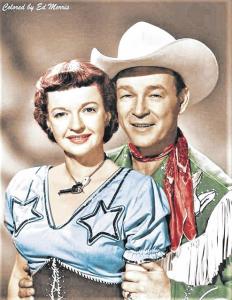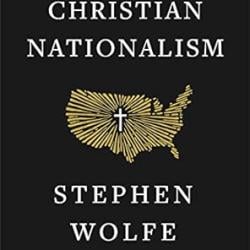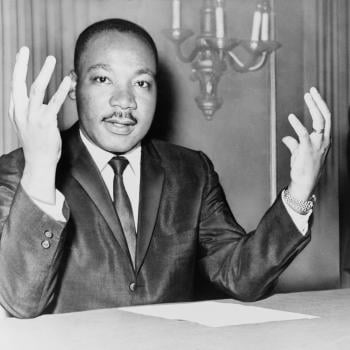Jesus and Roy Rogers
I recently here responded critically to an interview with Kristin Kobes Du Mez, arguing here that she only told one side of the story of white, American evangelicalism and that my experience, as a boy and youth growing up in “the thick” of white American evangelicalism did not fit exactly how she described it. Or at least that there is another side to the story that she told the interviewer.
All along I intended to read her book Jesus and John Wayne and now I am doing that. I intend now, occasionally, to review it here—in segments.
My overall impression, based on reading the Introduction and Chapter One, is that Du Mez is telling part of the story of how white American evangelicalism became mostly (or largely) Trumpist—focusing on the rise of “masculine Christianity” among American evangelicals in the 20th century.
But, as I have said here before, I grew up in a different evangelicalism than the one she is talking about and I don’t think it was that much of a minority. I’m sure she will disagree, but my experience and research are just as valid as hers. So I say. Some will no doubt disagree.
I am running into what I consider some blatant misrepresentations here and there in Du Mez’s book. Here I will cite just one example. In the first chapter she discusses the role of the mid-century famous “cowboy singer” Stuart Hamblen who was converted to evangelical Christianity through the ministry of Billy Graham. It just so happens that Hamblen was my father’s favorite Christian song writer and singer and I grew up hearing and occasionally singing all of his best-known Christian compositions such as “It Is No Secret.”
Du Mez claims in Chapter One that Hamblen’s Christian songs focused on the darkest aspects of Christianity, especially God’s wrath. That is simply not the case. Anyone who knows Hamblen’s music knows that is false.
Sure, someone will say that’s a minor point. But, to me, it casts some doubt over Du Mez’s research. What else might be mistaken?
My second complaint is that she fails to mention two American evangelicals who don’t fit her counter-narrative but were extremely influential on white American evangelicalism during the mid-20th century which is the focus of her first chapter: Aimee Semple McPherson and Roy Rogers. And I should add Roy’s wife Dale Evans to the list.
Sure, all three of them were “people of their times” and should not be judged by the cultural norms of 21st century America. But my point is they were extremely influential white American evangelicals who don’t fit her narrative. Were they just marginal exceptions to her story of the drift (or rush) of white American evangelicalism into “militant masculinity?” I don’t think so. They stand as major exceptions that undermine the whole story—insofar as it is meant to sweep all 20th century white American evangelicals up into its march toward Trumpism.
Du Mez really begins that story with evangelist Billy Sunday. He was no big hero in “my evangelicalism.” I remember him being mentioned only occasionally as a kind of clown who God nevertheless used. The church I grew up in was founded by followers of McPherson. While they expressed real ambivalence about some of her personal life, she was held up as a genuine evangelical revivalist greatly used by God. (I realize not all evangelicals thought of her that way, but that’s my point—white American evangelicals have never agreed completely about any evangelist or celebrity!)
Now I come to Roy Rogers—as my foil to Du Mez’s portrait of John Wayne as the quintessential man’s man for white American evangelicals. I simply don’t buy it. During the mid-20th century that was Roy Rogers more than John Wayne. Sure, many white American evangelicals liked Wayne’s movies. I loved some of them! I still think “The Cowboys” was a great film. But if we are talking about a quintessential EVANGELICAL cowboy or even just film star—that was for most white American evangelicals Roy Rogers. And his wife Dale Evans was equally beloved, admired and respected.
And Roy was neither militantly masculine, although he got into many fake gun fights with the “bad guys,” nor morally ambiguous. By today’s (academic feminist) standards, I guess, he would probably be considered bad just because he was a man with a gun. But he was as different from John Wayne as day is from night. He was the complete package of a good guy, kind to a fault, mild-mannered, almost feminine in some ways. And yet nobody ever questioned his masculinity. Was Roy Rogers an example of good masculinity? Or can there even be such a thing?
Some will question whether Roy Rogers and John Wayne can even be compared—in terms of popularity and influence. Well, over the long haul, no. Wayne outlived Rogers, made many more movies, and was hugely popular and influential in white American culture generally. But I will argue that Rogers was MORE popular among white American evangelicals than Wayne was—as an evangelical celebrity of television and cinema. I know that was the case in “my evangelicalism.”
Why does Du Mez not mention Rogers? Because he doesn’t fit her narrative? Because few now remember him? Both? Not many now remember Billy Sunday, either. But she mentions him.
So what’s my point? It is simply that, again, it seems to me Du Mez is building a story that serves her personal perspective about white American evangelicalism which, I argue, was and is much, much more diverse than her portrait of it suggests. “My evangelicalism” was mainstream in many respects.
Youth for Christ was a huge part of “my evangelicalism” and my memory of it is clear and detailed. There was no “militant masculinity” in it—at least not endemic to it. It was just Christ-centered fun.
Frankly, I find it just quirky that Du Mez even mentions Stuart Hamblen as a villain in her story of how white American evangelicalism became Trumpist. I have no idea, none whatever, what Hamblen would have thought of Trump. But I find nothing in Hamblen’s music that justifies her claim about it. And I know most of Hamblen’s gospel songs by heart—all the verses! If anything, they are just precious, sweet, emphasizing God’s love and forgiveness and redeeming power.
I will continue reading “Jesus and John Wayne,” so stay tuned if you dare 🙂












